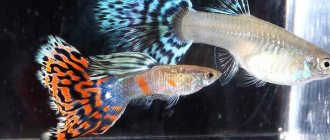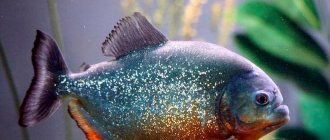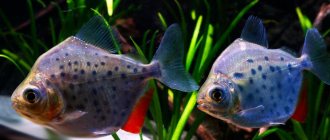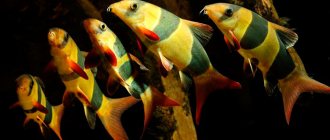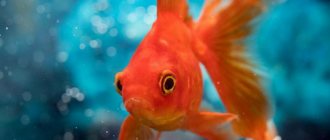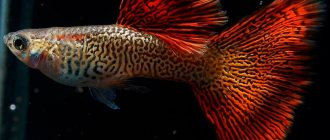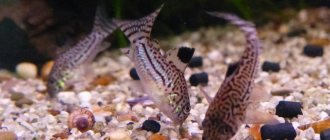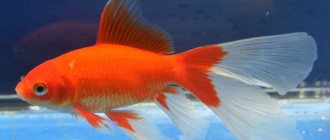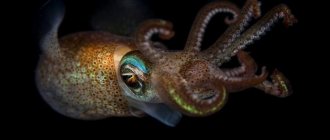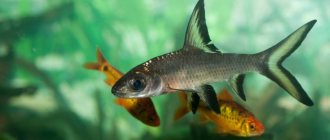Acantophthalmus Kühl (lat. Pangio kuhli) is a species of fish of the family Cobitidae. This is an unusual, peaceful, and beautiful species of loach that is very often found in aquariums. Its behavior is typical of all loaches; they are constantly on the move, constantly searching for food in the ground. Its disadvantages include a nocturnal lifestyle and caution; as a result, acanthophthalmus is difficult to see in the aquarium during the day. Next, you will learn how to keep, feed, breed and select fish compatible with Kühl's acanthophthalmus.
General information and features
Acantophthalmus belongs to the loach family of fish. A feature that distinguishes them from other representatives of the underwater kingdom is their elongated body shape, similar to a snake. The appearance does not in any way resemble peace-loving fish.
Acanthopthalmus also has a second name - spiny eyes. They are named so because near the eyes there are spines that are curved backwards. It turns out that they help their owners in many ways.
The spines perform 2 useful functions:
- Protective. When predators attack acanthophthalmus, the spines protrude and pierce the enemy, protecting and freeing their owner. Predatory fish, knowing this feature, rarely attack representatives of the Loach family, since many of them died as a result of such attacks.
- Conductor. The spines help the owner get into hard-to-reach places. Finding itself in a narrow space where the fish cannot bend its body to move forward, it can cling to nearby objects with its spines and, thus, push itself forward, closer to the target.
Interesting facts about aquarium worm snakes
Acanthophthalmus has a movable spine bent back under the eye. Thanks to it, fish crawl without problems into narrow crevices among the stems: they turn their heads to the side, cling to some object with their spikes and pull their body forward.
If a small predator grabs this seemingly peaceful fish, the sharp thorn will quickly motivate it to spit out the unsafe loach and not approach it again.
If one of the birds or catfish swallows the acanthophthalmus whole, it will cut through the walls of the predator’s stomach and even possibly get out. But the insatiable hunter dies. Creation date: 10/24/2018
History of the origin of acanthophthalmus
The tropical loach is native to Southeast Asia and India. Distributed in Thailand, Malaysia, Singapore.
Small ponds are a natural aquarium for snakes. Loaches prefer slow currents and soft muddy bottoms. They love to spend time hiding under snags or fallen leaves. They are not considered schooling fish.
In 1846, the fish received its first description. And this was done by the French zoologist Achille Valenciennes. The first fish appeared on Russian territory in 1970, and 3 years later they began to be bred.
Southeast Asia and India
Habitat
Acantophthalmus Kühl (Pangio kuhlii) distribution sites.
It is found across a vast territory of southeast Asia: the Indonesian islands of Sumatra, Kalimantan, Java, Thailand, Singapore and Malaysia.
Acantophthalmus Kühl (Pangio kuhlii) habitats.
It lives in fresh water bodies, slow-flowing rivers and streams with a soft muddy bottom and a large layer of fallen leaves.
Description of the fish
Acantophthalmus has its own distinctive features in body structure and behavior.
Appearance
Nature has given acanthophthalmus a unique body. Thanks to its distinctive feature, the fish became like a snake.
In addition to its length, the body is characterized by its shape - it is flattened on both sides in the tail area. When kept at home, the length of the fish does not exceed 12-14 cm. On the small head near the mouth there are 3 pairs of sensitive whiskers. With their help, loaches feel for food.
Nutrition
Since Acanthopthalmus are omnivores, you will not have any problems feeding them at all. They will consume live and frozen food with great pleasure, but will not disdain granulated and tableted food. It is important here that the food reaches the bottom before other inhabitants attack it.
You can please your aquarium snake-like pets with brine shrimp, tubifex, bloodworms, and daphnia. And you don’t have to worry that the bloodworm or tubifex will burrow into the ground: for these energetic fish it’s not a problem to find and fish them out. A fifth of the diet should be plant foods.
Types of acanthophthalmus
Acantophthalmus is the most common type of snake fish for breeding in aquariums. Aquarists are attracted not only by their interesting appearance, but also by the behavior of representatives of the underwater kingdom.
The homeland of acanthophthalmus is Indochina. In the 1970s, these fish appeared on the territory of the former USSR.
Acanthopthalmus fish
Acantophthalmus culea
The appearance of the pangio acanthophtalmus kuhli fish resembles a flattened snake. The body is colored yellow-pink. Along the yellow-orange body, near the head, there are black-brown stripes. Some individuals may have bifurcated stripes.
The body length reaches 14 cm. A notable feature is its secretive lifestyle. Fish love to hide their bodies under different shelters, and they also love to burrow into the ground. Distribution area: water bodies of the Malay Peninsula and Indonesia.
When breeding at home, they feel better in a flock, so it is recommended to stock at least 3 Acanthopthalmus culae in the aquarium. The fish are very active: they can play catch for a long time, and then lie on the leaves, curled up in a ball. Dilution is possible only if optimal water parameters are maintained.
Acantophthalmus culea
Acantophthalmus myers
In its natural habitat, it is distributed in rivers of Thailand, which are characterized by slow flows. The body of Myers, when kept in an aquarium, does not exceed 9 cm in length. The fish is colored yellow-red. There are black stripes all over the body. Depending on the age of acanthophthalmus, their number varies from 10 to 24 pieces. Prefers dim light and likes to hide in shelters.
Acantophthalmus myers
Acantophthalmus semi-girdled
It has an unusual sandy body color with interrupted black stripes. The species is characterized by the absence of scales on the head. The small eyes are covered with a thin film that serves as protection. The dorsal fin is shifted towards the tail.
Acantophthalmus semi-girdled
Breeding
Reproduction of Acantophthalmus is seasonal, but breeding them at home is extremely difficult, usually requires hormonal injections and is recommended only for experienced aquarists.
Sex differences are extremely weak. Females are usually slightly larger than males and their abdomen is translucent, revealing greenish granular eggs.
For the breeding process, you will need a special spawning tank with a large bottom area (from 1 thousand sq.cm.). The water level should be low (up to 20-25 cm) to make it easier for Acanthus to rise to the surface for breathing. A special separator mesh is laid on the ground, and numerous aquatic plants take root on it.
The lighting should be dim, slightly increased acidity (6-7 pH), hardness 6–15 dGh, temperature +25…+28 °C.
To stimulate reproduction (simulating the monsoon season), water should be changed daily (10-20% of the total volume). For breeding, adult fish older than 12 months are selected; it is better to choose females with a large, thick belly.
Hormonal injections are given as follows:
- Acanthus are planted in a separate container. A three-liter jar will do.
- Add a couple of drops of Novocaine or Tricaine to the water.
- After the fish fall asleep, they are carefully removed one by one with a soft net, placed on a damp cotton swab and an injection of human chorionic gonadotropin is injected under the back fin at the rate of 50-140 m.u. depending on the size of the individual. At the same time, the head is slightly pressed with a piece of wet cotton wool. You can also insert a needle into the abdominal cavity near the anal fin (towards the head).
- Half-asleep fish are lowered into the spawning tank. This state will remain for up to 4-6 hours.
After some time, males begin to show interest in females. This is manifested by a kind of courtship - hugging with pectoral fins, pressing head to head.
If the mating games were successful, then the females lay up to 600-700 eggs. This usually happens when the couple rises to the surface, greenish eggs are released from the female body in sharply small portions. The masonry sinks to the bottom under the net, and thus becomes inaccessible to fish (they can eat the eggs).
The parents are removed from the spawning tank, the water is treated with mycopur or another fungicide to disinfect it from bacteria and saprolengia, and the fry are waited for to appear.
The eggs begin to hatch after about a day or two; by the end of the first day, the larvae grow tails, and by the fourth or fifth day they are already swimming and feeding on their own. The first feeding should consist of live dust, grindal, and rotifers.
Lighting should remain dim - juveniles cannot tolerate bright light and often hide in shelters. By two to three weeks, the fry grow to two to three cm and spots appear on their body in place of future stripes. Now they can be switched to larger live food.
Contents of acanthophthalmus
In order for acanthophthalmus to feel good in a home aquarium, they need conditions close to natural ones. Therefore, you should properly equip the tank for breeding snake fish.
Attention! Keeping in an aquarium is allowed only in dim light, since this species does not tolerate bright lighting. Therefore, the aquarium can be placed even in a dark room.
Feeding is not difficult. They love to swim along the bottom of the tank and feed on leftovers.
Notes
The genus Pangio is one of the most specific of the Loaches and is widely distributed throughout South and Southeast Asia with a species diversity believed to be significantly greater than is currently recognized and described.
Acantophthalmus species (Pangio) are the most popular in aquarium farming.
This genus has countless variations, both within and between populations, although most have the same basic pattern of dark saddle markings, usually wider on the dorsal surface, over a yellow-orange base color.
All Acantophthalmus species have sharp and mobile subocular spines that are usually hidden in a pouch under the skin, but come out when the fish is stressed, such as when it is removed from the water. Therefore, it is necessary not to forget this, since they can get entangled in the mesh of the net, and larger species can injure human skin.
Aquarium
Due to the fact that the aquarium fish Acanthopthalmus leads a bottom-dwelling lifestyle, the shape of the aquarium should be rectangular or square. Round tanks are not suitable for fish with a snake-like body, as they do not contain enough usable space.
If you plan to breed 5-6 acanthophthalmus, then this amount will require 70 liters.
The reservoir must be covered with a lid or mesh. The safety of pets depends on this. The lid will prevent them from jumping out of the water and dying unattended.
However, the violent temperament of fish does not always require the creation of cover. Loaches are real barometers, and when they begin to sense changes associated with atmospheric pressure, they begin to swim chaotically throughout the aquarium. Often such activity leads to the fact that the thorns, as they are also called, jump out of the water and break into nearby objects.
Aquarium with acanthophthalmus
Water parameters
The optimal temperature for breeding acanthophthalmus varies from +22°C to +28°C. At low temperatures, individuals get sick. Hardness level – 5 dH, acidity – 6.5 pH.
Small and adult inhabitants are sensitive to water indicators; if they don’t like something, they float to the surface. This behavior is not typical for this species, since acanthophthalmus prefers a bottom lifestyle.
Peculiarities of behavior of aquarium worm snakes
Despite its menacing appearance, due to its resemblance to a snake, acanthophthalmus is an almost completely peaceful fish that lives in the ground and at the bottom of the aquarium. What the owner of such fish may not like is their secretive lifestyle: sometimes you can not see them for days.
These aquarium inhabitants are really neat! They feel comfortable only in clean water. It is also necessary to provide them with soft soil, as fish like to burrow into it. This can be boiled peat chips, sand, fine-grained smooth gravel. Acantophthalmus do not like bright light, so good shelters should be provided for them.
If there is a filter in the container, then all the holes in the water must be covered with a mesh so that the fish trying to get into every hole or crack do not end up inside.
Although these snake-like fish are not picky about the volume of the aquarium, it is better to choose a container of a comfortable size, and with a large bottom area. For a flock of 6-7 fish, you need a container of at least 50 liters. Since these are schooling fish, the more you put them in the pond, the better their character and individuality will manifest themselves, and the freer they will feel. The aquarium where these nimble representatives of the loaches are kept must have a lid, since fright can provoke the fish to jump out of the water.
Acanthophthalmus kuhli (Acanthophthalmus kuhli, spiny eye) is one of the few representatives of the genus that can be found in the aquarium. Aquarists fell in love with him thanks to his irrepressible energy, which he directs to the fight for cleanliness in the reservoir, picking up and eating all the remains of food that have fallen to the bottom.
Reproduction of acanthophthalmus
Spawning occurs during the rainy season. Rare cases of reproduction of Kühl fish are known in captivity. To create favorable conditions for breeding, you first need to buy a huge aquarium. It is possible that hormones will need to be administered.
The difference between a female and a male
Dimorphism is pronounced. Females and males reach sexual maturity by 12 months. The body of the female is 2 cm longer than the body of the male, the abdomen is more rounded and large.
Female and male acanthophthalmus
To obtain offspring, it is recommended to carry out a number of actions:
- first you need to buy a spawning tank - a tank with a volume of at least 1000 liters;
- fill the tank with water no more than 20 cm in height;
- you will need to plant living plants, both rooted in the ground and self-floating;
- It is recommended to cover the bottom of the tank with a separator mesh;
- care must be taken to create dim lighting;
- check the water for compliance with the following parameters: hardness, acidity and temperature.
During spawning, it is necessary to change the water daily, 1/10 of the total volume.
Only experienced aquarists can inject their pets. To do this, you need to put the adults in a jar and add novocaine. As soon as the fish become numb, it is necessary to inject a solution of gonadropine into the dorsal muscle at the rate of 60-150 IU. per one individual. For 6 hours the fish will be motionless.
How to distinguish female and male
The sex of adults is usually determined without difficulty. During pregnancy, the female has a large belly, where greenish eggs can be seen. Thickening of the second thoracic ray, and sometimes the third ray, is characteristic of males of the species P. alcoides, P. incognito and P. pulla.
In addition, males can be distinguished from females using the pectoral and ventral fins, which are shorter in females than in males. This applies to most Pangio species.
Feeding
Acantophthalmus are considered omnivores. They happily eat dry, frozen, vegetable, and live food. They eat leftover food that sinks to the bottom.
The diet requires bloodworms, small snails, spirulina, brine shrimp, tubifex, cyclops, and daphnia. In specialized stores it is recommended to purchase food containing carotenoids to enhance body coloring.
Before giving live food, it is recommended to keep Ichthyphorus in the solution for a few seconds so as not to infect the aquarium. Frozen food is not dangerous, but you should be aware that when frozen, some of the nutrients are lost.
On a note! Acantophthalmus are peculiar cleaners of the reservoir, as they eat the remaining food from other inhabitants of the underwater world. Even the soil becomes clean after them, and replacements have to be done less often.
You need to feed 3 hours before darkening. The portion should be of such a volume that the loaches in the aquarium can eat it within 5 minutes. The ideal food is dry food in tablet form. In this form, they quickly sink to the bottom, where the inhabitants of the underwater world await them.
Dry food in tablet form for acanthophthalmus
Keeping at home
Caring for acanthophthalmus is not difficult; the fish is quite hardy. The owner needs to take into account that they, like catfish, lead a bottom-dwelling lifestyle. In order for acanthophthalmus to live comfortably, their living conditions must correspond as much as possible to natural ones:
- Capacity. For 5-7 pangios, the recommended aquarium volume is 100 liters or more.
- Bottom. The optimal soil is coarse sand or small pebbles. Gravel is strictly not recommended; acanthus can be injured and die.
- Decor. The internal space of a home pond is filled with decorative grottoes, driftwood, and planted with plants, leaving enough space for the normal functioning of fish.
- Aeration and filtration. The filter is selected with an intake hole, which must be covered with a mesh so that the fish are not drawn inside. It is better to use a special bottom filter or an internal aqua filter.
- The lighting is muted, diffused, as close as possible to the natural habitat of the fish.
Don't forget about aeration
Pangio prefers to live in water with the following parameters:
- temperature range from 22 to 28 degrees above zero;
- pH - 5-5.7;
- hardness from 5 to 9.
If the acanthus often begins to rise to the surface of the water, it means there is a problem in the aquarium. You urgently need to siphon the soil and don’t forget to change the water.
Nutrition and feed
Acantophthalmus are called aquarium orderlies; they collect from the bottom the remains of food left uneaten by the fish; they do not disdain small snails. But this does not mean that you do not need to feed them. Any food that they can grab will suit the loaches. They enjoy eating tubifex, bloodworms, and dry food. It is also recommended to give special tablets for bottom fish. Fish prefer to feed in the evening.
They feed on live food
Diseases and treatment
Most often, pangios are obese; they rarely have the following diseases:
- Ichthyophthirosis is an infectious disease. Small white bumps appear on the fish's body. If treatment is started in time, the fish can be saved, otherwise death is inevitable. Treat your pet with malachite greens, adding a solution to water until the tubercles completely disappear. The water temperature is raised by 1-2 degrees during treatment. After a week, change ½ part of the water.
- Amebiasis is caused by parasitic amoebas. A sick fish begins to breathe rapidly. When treating the pet, place it in a bath with tinidazole and keep it there for no more than 4 hours. At the same time, the aquarium is disinfected with a formaldehyde solution (3%).
Compatibility with other fish
Peace-loving creatures will never offend their neighbors. They even treat shrimp favorably. However, the best neighbors for acanthophthalmus are calm underwater inhabitants.
Good neighbors:
- neons;
- angelfish;
- zebrafish;
- loaches;
- gourami;
- apistograms;
- shrimps.
Acantophthalmus find a common language with thorns, tetras, and guppies.
Acanthopthalmus diseases
Despite good immunity, acanthus still has health problems. Many diseases develop as a result of improper care.
The first thing that acanthophthalmus is prone to is obesity. Acanthus are so voracious, if you do not control the feeding process and portions, they will become clumsy. It is recommended not to feed your pets once every 7 days, giving them a fasting day.
The second most common disease is ichthyophthyriosis. This is a contagious disease of an infectious nature. If a ciliated ciliate gets into the aquarium, it’s a disaster, all the individuals will get sick. Symptoms of the disease are the presence of small white bumps throughout the body.
Diseases and treatments
The virtual absence of scales on the body of acanthophthalmus makes it defenseless against parasites. Penetrating into an aquarium with dirty soil, algae or poorly washed decorations, pathogens of infectious diseases quickly find victims.
The presence of the disease in pets can be determined by changes in appearance . Usually this is a fading of the color and the formation of ridges on the skin. Common acanthus diseases include:
- Amoebiasis . The fish's body becomes infected with parasitic amoebas, and its breathing becomes more frequent. If you notice your pet’s unusual behavior, you need to place it in a separate container with a tinidazole solution for 4 hours. In addition, it is necessary to disinfect the general aquarium by pouring a 3% formaldehyde solution into it.
- Ichthyophthirosis . A dangerous disease that can lead to death. It appears as tubercles covering the body of the fish. The sick individual is quarantined in a container with a solution of malachite green. The water temperature in quarantine should be raised by 1–2 °C. Periodically adding malachite greens to the water, the fish is kept in it for a week. If the tubercles do not disappear, change the water to half the volume and continue treatment.
It may seem to an inexperienced aquarist that keeping acanthophthalmus is very difficult.
In fact, with properly organized care and compliance with certain parameters, these fish do not cause problems.
Reviews
Sooner or later, aquarists catch themselves thinking that they want to have a peace-loving creature with an unusual body shape in the aquarium. After a long search, they choose acanthophthalmus. However, before you get yourself benthic inhabitants, it is recommended to study information about their habits and preferences so that breeding does not cause trouble.
Have you ever wanted to purchase an unusual inhabitant for your aquarium? Share in the comments!
